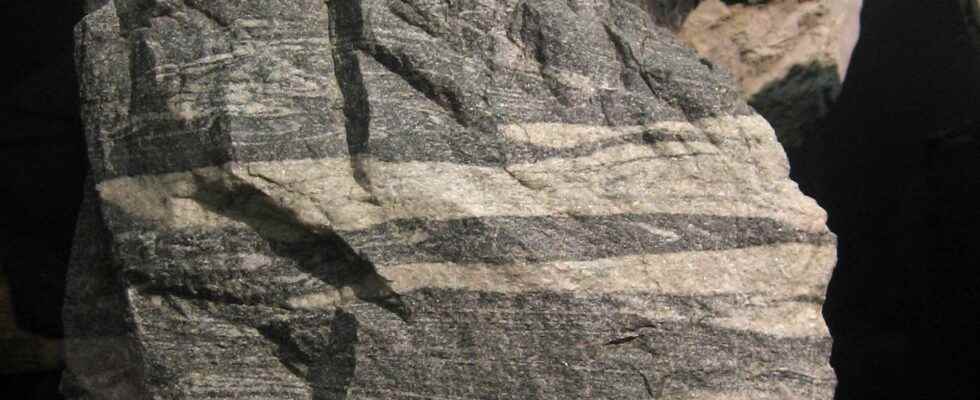Under certain conditions of pressure and temperature, the rocks that make up the continental crust can melt. However, the rocks of the earth’s crust have very varied compositions. They are made up of many minerals different, each of which has a temperature of merger well defined. As a result, the fusion of the rocks of the continental crust is never total for a given temperature. This is why we speak of a partial merger. The witnesses of this process are the migmatites.
Evidence of partial melting within the continental crust
The migmatites are metamorphic rocks having undergone partial melting within the continental crust. We talk about the process of migmatization, or migmatism. The etymology of the word comes from the Greek ” migma which means “mixture”. Because these rocks are typically composed of alternations of two thin beds of colors different, which are called compositional bandings. These alternations (ribboned structure) are the marker of the partial melting that operates on the rock composed of different types of minerals. Thus, the light-colored beds represent the portions of rock that have melted. This is the leucosome, which results from the on-site crystallization of the phase liquid. The darker colored beds are formed by the portions of rock that have not melted. It is the mesosome. Between these two main bandings, one can observe a fine edging darker, which corresponds to melanosomethe residual fraction (solid) of the partial merger.
It is however possible to find migmatites composed of more than two different compositional bandings.
The migmatites are therefore witnesses to the process of partial melting of the continental crust. From a mineralogical point of view, the protoliths (rock of origin) of migmatites are often gneiss, which are themselves derived from the metamorphosis of granites. As a reminder, the granites, igneous rocks plutonic from the partial melting of the mantle, are the rocks that mainly make up the continental crust.
A process at the interface between metamorphism and magmatism
Migmatites can of course show highly variable partial melting rates depending on the case. We will thus find weakly migmatized rocks, whose protolith structure is still clearly identifiable. Conversely, we will also find strongly migmatized rocks, having undergone a high degree of partial melting, that is to say having almost completely melted. In this case, we often speak of granite ofanatexia. Between these two extremes, we can find metatexites and diatexites.
Migmatites often form in the context of continental collision. Indeed, when a mountain range forms, the piling up of the scales of continental crust increases the pressure and the temperature at the level of the crustal root. Under these conditions, the rocks will first undergo a process of metamorphism. When temperatures reach around 600°C, hydrated rocks of granitic composition begin to melt. This is the beginning of mimatism. The minerals that will start melting first are the light minerals: quartz and feldspars. This molten phase will then separate from the residual solid phase composed of minerals refractory to fusion, generally dark in color (biotites, garnets, amphiboles, sillimanites, etc.). This is the segregation stage: the liquid phase will migrate to form a lens which, by crystallizing (if the temperature decreases), will form a clear bed. The higher the degree of partial melting, the higher the degree of migmatization and the more the clear liquid phase will predominate. The structure of the rock, resulting from the previous phase of metamorphism, becomes less and less identifiable.
From granite to anatectic granite
When the fusion rate becomes maximum, there is formation of granitic migmatites, also called anatectic granites. This ultimate stage of the metamorphic process thus leads to the granitic rock formation. This type of granite, resulting from the fusion of the continental crust, must however be differentiated from the granites resulting from the fusion of the mantle. The origin, the formation process and the geodynamic context are not the same.
It can be noted that a granite resulting from the fusion of terrestrial mantle can thus undergo the process of end-to-end metamorphism until it is transformed back into granite during the final phase of migmatism. All of this transformation, however, takes place within the continental crust. Similarly, it is possible to obtain an anatectic granite from sedimentary rocks for example.
You will also be interested
Interested in what you just read?
